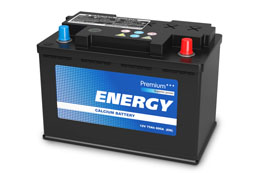
The first battery was invented in the 18th century, and since then it has become the most common source of power for various household as well as industrial devices. How batteries work is an interesting process. A battery or electrochemical cell works by converting chemical energy into electrical energy. There are two main types of batteries, which are primary (rechargeable) battery and secondary (non-rechargeable) battery, while there are two basic types of battery cells, which are dry cell and wet cell battery. These types are distinguished on the basis of the chemical process which is chosen for that particular design of a battery. There are a few other types of cell batteries available, namely, electrolytic cell, flow cell, galvanic cell, fuel cell, voltaic cell, etc.
Information
First of all, one needs to understand that cell and battery are synonymous words, however, cell battery is quite a common term used by many. A wet cell, is also known by various other names like vented cell and flooded cell. It is called flooded cell because all internal parts of a battery are covered by a liquid. The reason why it is called a vented cell is because certain type of gases are produced during the usage of these batteries. A wet cell battery works on liquid electrolyte and it is commonly prepared in the laboratories in beakers. Most of the wet cell batteries is a solvent of lead and sulfuric acid. The most basic wet cell may contain thin copper and zinc plates, that are partially immersed in lemon juice. These batteries have one exposed end, which is then connected to a device with help of wires. Wet cell batteries are sealed and you should not expose them for safety purposes.
Maintenance
After certain amount of usage, wet cell batteries get exhausted and are unable to provide sufficient electricity, which is required to perform its intended functions. The main reason behind this, is that the plates that are used peel off in the discharging and charging cycle of the batteries. This cycle causes constant expansion and contraction of batteries, which reduces their size, gradually killing them. This process hastens in the hot and humid areas, and they also die due to excessive vibration, excessive usage, overcharging, etc.
First and the most common reason why the battery dies is because they are not well charged and kept discharged or are partially charge, repeatedly. Hence, one needs to fully charge the batteries as soon as they discharge. You can also check the status of the battery with help of a hydrometer, which informs you the gravity of the wet cells. Keep an eye on the tightness of the wires and cleanliness of the battery tops. Do not play with the wires when the batteries are charging, as it can affect the battery voltage. You should never experiment with the seal, and also heed the security warning that comes with all batteries. Lead and sulfuric acid that are used in these batteries are caustic by nature and they may cause severe lead poisoning and result into burning.
In case, you accidentally open the seal of a wet cell battery, then you should immediately call the fire department and let them solve the problem.